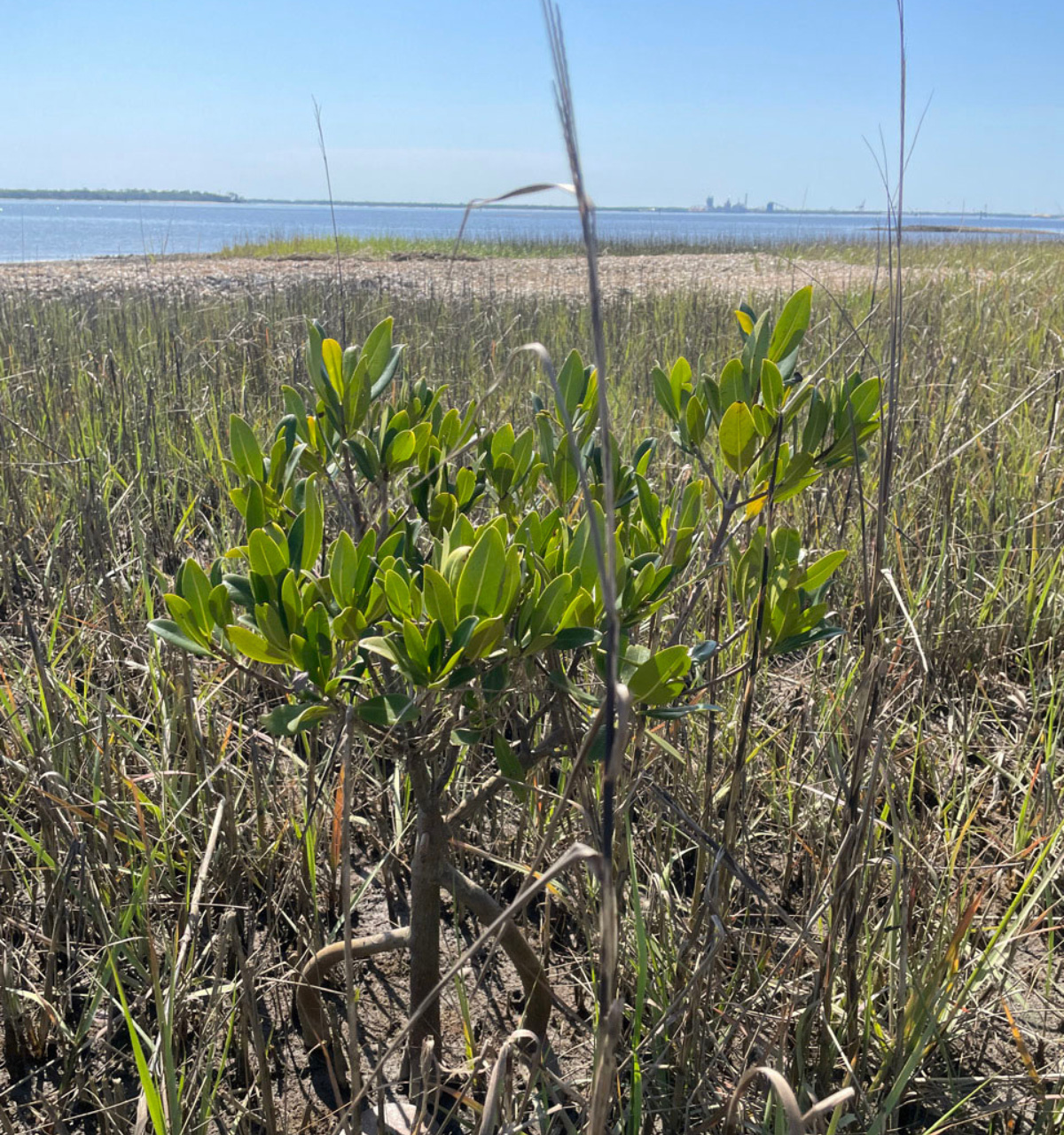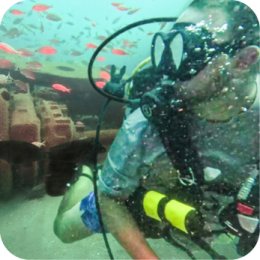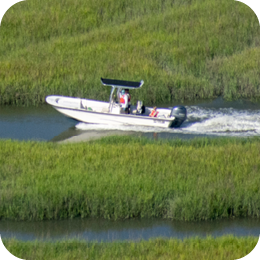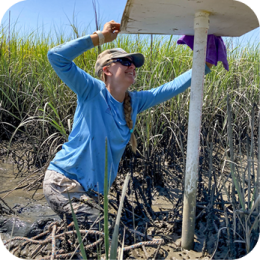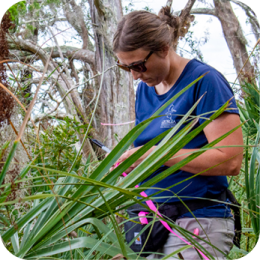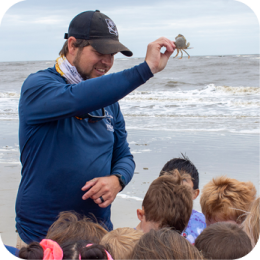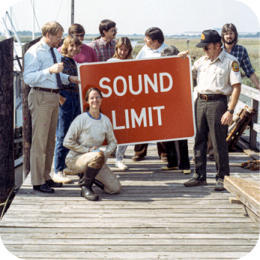Mangroves are a unique group of trees and shrubs that grow in coastal intertidal zones, typically found in tropical and subtropical regions. They have adapted to thrive in harsh environments where saltwater meets land, such as estuaries, lagoons, and coastal shorelines. Prior to May 2024, coastal ecologists had not observed them occurring naturally in Georgia. This changed in May 2024, when a biologist with the U.S. National Park Service observed and documented them in Camden County, just over the Florida line.
Below is a Frequently Asked Questions guide created by the Georgia Department of Natural Resources that may answer some common questions about the species expansion into the state.
What are the key factors driving the migration of mangroves from Florida into Georgia?
Warming temperatures, including milder winters, are believed to be the driver of the expansion of mangrove habitat. Mangroves are sensitive to cold temperatures and cannot survive in extended freezes. Their distributions are limited to areas where winter freezes are less frequent or prolonged. Mangrove migration is expected to steadily expand along the east and Gulf coasts with the projections of continued warming.
What potential impacts do the migrating mangroves have on the native ecosystems and species in Georgia?
Based on mangrove migration northward up the east coast of Florida and across the Gulf coast, we expect that mangroves and salt marsh grasses will coexist. It may take a century or more for mangroves to become the predominant species within what is currently a salt marsh system.
Mangroves, like salt marshes, create habitats for wildlife and fisheries, improve water quality, reduce storm damage and erosion, and support economic growth through tourism. Scientists don’t know exactly how the transition from salt marsh to mangrove will occur, therefore, we lack an understanding of how these ecosystem services may change.
Are there any conservation strategies or management practices in place to address the migration of mangroves into Georgia?
The migration of mangroves is a natural shift due to changing temperatures. Mangroves provide ecosystems services similar to salt marshes and are not currently viewed as invasive or non-native species requiring new management practices. At this time the State will be monitoring the expansion of this species but not removing these plants due to the ecosystem services they provide.
Mangroves exist within the estuarine area of the coast, meaning they are subject to the protections offered through Georgia’s Coastal Marshlands Protection Act (O.G.G.A. 12-5-280 et seq.).
How do mangroves affect coastal erosion and sedimentation patterns in their new habitats?
Mangroves consist of a network of root structures, called pneumatophores, or breather roots, that form a network that collect silt and debris, and control erosion. Spartina alterniflora, our dominant native marsh grass, also helps to stabilize marsh sediments, so together these species are believed to support bank stabilization.
What is the lifecycle of mangroves and how quickly do they grow?
Mangroves are subtropical woody shrubs that grow in estuarine areas like salt marshes. They typically reach heights that vary from 4 to 9 feet on average but can reach as tall as 60 feet.
Leaves of the black mangrove, a species found in Georgia, are 1 to 5 inches long, elliptical, with glands on the underside that secrete salt, creating a whitish appearance. Clusters of small white flowers appear in spring and summer. The seed of the black mangrove germinates into a seedling, or propagules, while still attached to the parent plants. The propagules are green teardrop shaped and approximately 1 inch long. They fall off the plant and float on the surface of the water to be dispersed by the tide. Seeds wash up on shorelines or in marshes and sprout into seedlings called propagules. Black mangroves have aerial roots called pneumatophores that stick up out of the ground like straws getting oxygen down to their root system.
Red mangroves are also found in Georgia. This species features leaves very similar to the black mangrove but not as white on the underside. They produce small yellow flowers and seeds germinate into seedlings, or propagules, while still attached to the parent tree. Propagules are green or brown and elongated, resembling green beans, and drop to the ground and begin to grow or they can be taken to new areas through tides and currents. Once mature, red mangroves have extensive prop root structures that help to anchor sediment.
Mangroves will grow at different rates depending on species and their location. Some mangroves may grow an inch or less per year whereas others may grow up to 5 inches each year.
How might the presence of mangroves in Georgia influence the local fishing and shellfish industries?
Impacts, either positive or negative, are unknown at this time. Georgia DNR will continue to follow research that is studying mangrove impacts to fisheries in order to better understand effects of mangrove migration.
What research is being conducted to monitor and understand the ecological impacts of mangrove migration into Georgia?
There is mangrove research occurring in the U.S. as other states see the migration of mangroves into saltmarsh habitats. The Georgia Department of Natural Resources is following some of those studies to ensure that Georgia knows what could be expected from this new species.
What should I do if I think I have found mangroves in Georgia?
Mangroves may be found at the marsh/water edge all the way up to the marsh/upland boundary. If you find a mangrove, please report its location along with a photograph on the iNaturalist app. The Georgia DNR will be monitoring iNaturalist.org for locations submitted.
It is a violation of the state Coastal Marshlands Protection Act to intentionally plant or remove mangroves or any other species within the Act’s jurisdictional area.
Other resources
"Mangroves on the Move: The peripatetic plants follow the warming world into Georgia"
By Dan Chapman, U.S. Fish & Wildlife Service, May 20, 2024
"Black Mangrove Range Expansion in Georgia: An Annotated Bibliography"
Compiled and summarized list of review and research papers
Map of mangroves discovered in Georgia (as of May 2024)
 More questions?
More questions?
Contact Jaynie Gaskin, a wetlands biologist with the Coastal Resources Division, at jaynie.gaskin@dnr.ga.gov or by calling (912) 264-7218.
